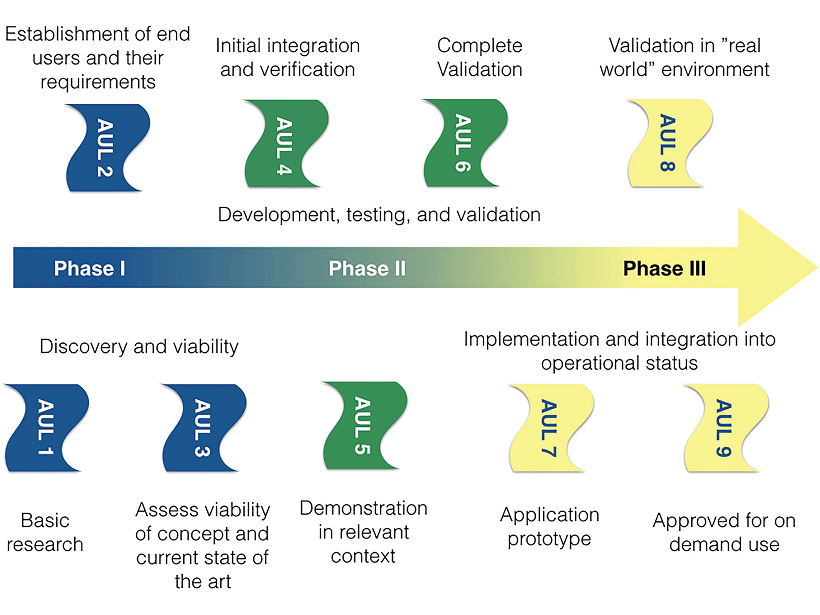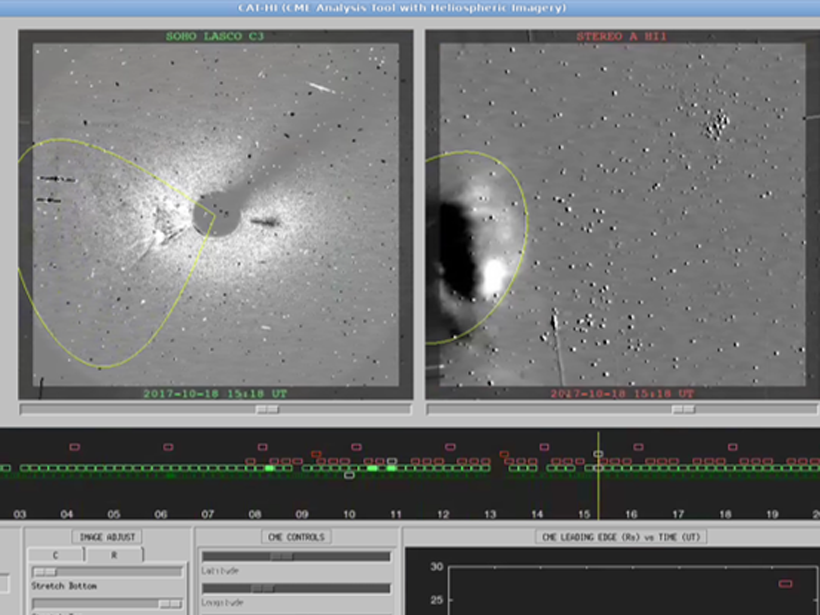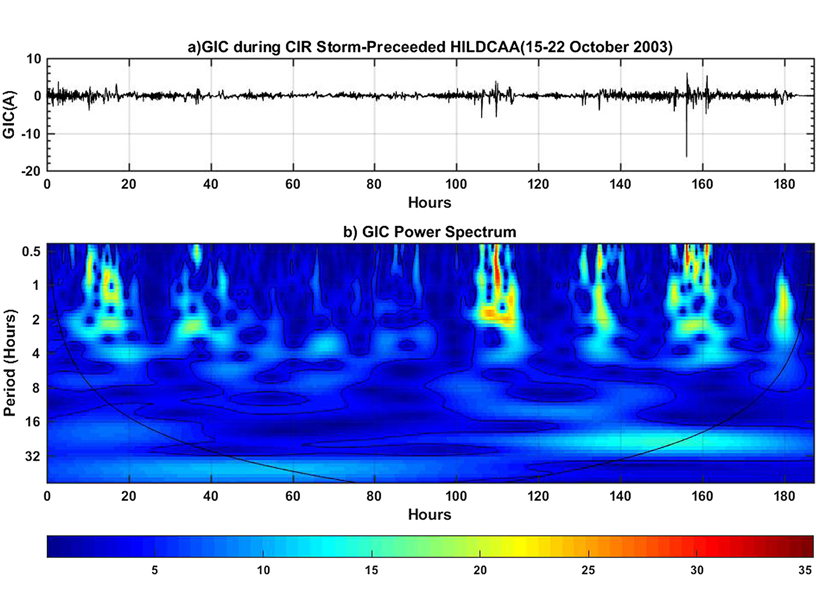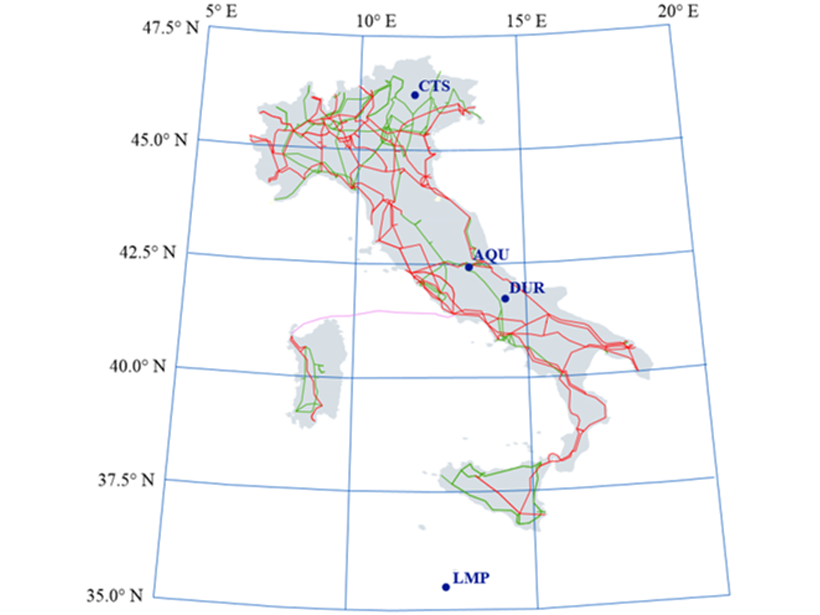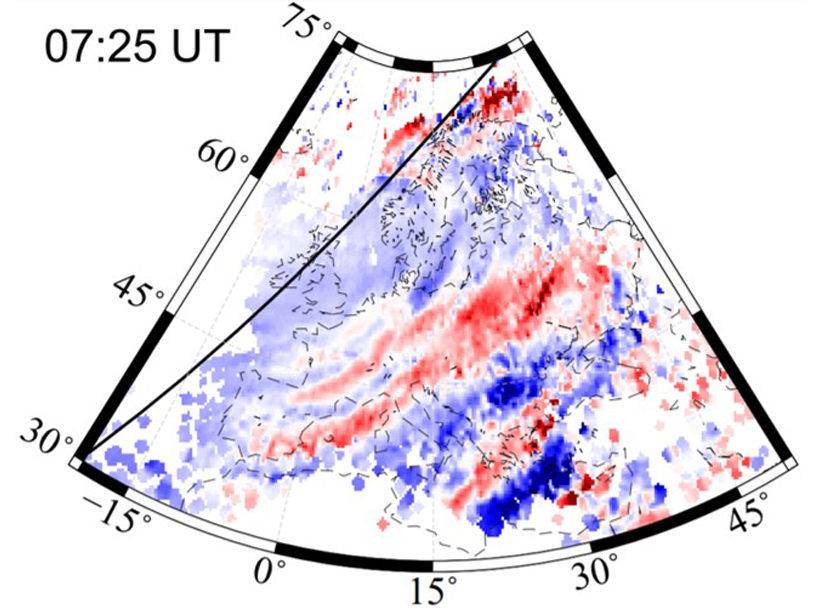The transition of space weather science from research to operations needs a framework with both good science and a good dialogue with end users.
Michael A. Hapgood
Editor, Space Weather
Space Traffic Management: Better Space Weather Forecasts Needed
Better forecasts of space-weather driven changes in thermospheric density are urgently needed to ensure safe management of the rapidly growing volume of space traffic in low Earth orbit.
Using Earth’s Atmosphere as a Solar Flare Monitor
Measurements of very-low frequency radio signal phase and amplitude can detect upper atmosphere changes caused by solar flares, enabling us to monitor flare occurrence and intensity.
Space Weather Aviation Forecasting on a Global Scale
Under a new mandate, consortia of the world’s major space weather centers will disseminate new space-weather advisories for civil aviators representing a significant change-of-state for space weather.
Looking Away from the Sun: Improved Tracking of Solar Storms
A new tool for tracking coronal mass ejections away from the Sun opens a path toward more accurate warnings for operators who have to cope with adverse space weather.
Space Weather Drives Power Grid Anomalies in Europe
A retrospective cohort analysis of anomalies on the Czech power grid shows they are more common during enhanced geomagnetic activity, the first time such impacts have been identified outside the USA.
Can Moderate Space Weather Have Major Impacts?
Pipeline corrosion is an example of why we need better awareness of how long-term exposure to moderate space weather may have significant economic impact by slowly degrading vulnerable systems.
A Space Weather Threat in the Mediterranean Region?
The impact of space weather on power grids in Mediterranean countries, such as Italy, needs deeper assessment, including consideration of coastal effects, ground conductivity, and failure reports.
Seeing Waves: GNSS Tracking of Waves in the Upper Atmosphere
Dense GNSS networks enable scientists to track large-scale waves traveling through the upper atmosphere, away from sources in the auroral zone and the day/night terminator.
Forecasting the Threat from the Sun
Ensemble techniques are opening a path toward space weather forecasts that give deeper understanding of the risk posed by each solar storm that approaches our planet.

